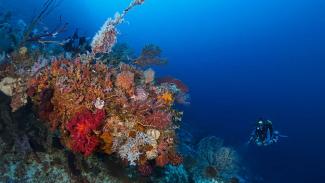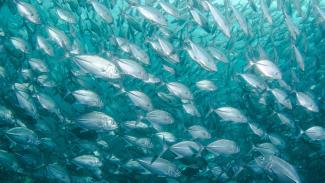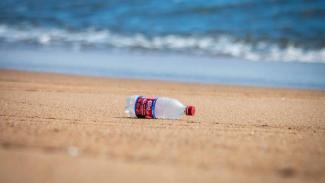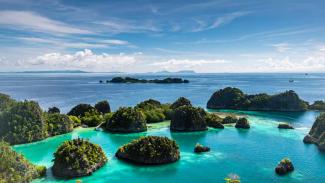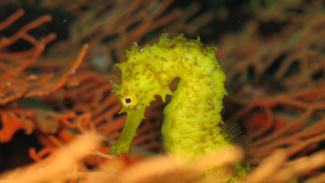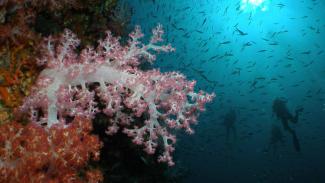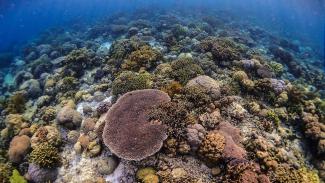
Coral Reefs are the most complex and productive of all eco-systems on earth. As divers, we often marvel at the incredibly beautiful and complicated coral reef structures we see and maybe wonder how how they came to be. They have been created over many thousands of years using a complex, unique combination of ingredients and circumstances.
Here is nature's incredible recipe...
Building blocks
The first crucial ingredient are coral polyps from hard coral species. These small invertebrates - or spineless animals - that are related to jellyfish, are the primary reef-builders that are mainly responsible for the beautiful coral reefs we see today.
Then you would need to add thousands of Zooxanthellae to each coral polyp. Zooxanthellae are special, tiny algae or plant that lives inside the coral polyp and use photosynthesis to convert the sun's rays into create energy, which the coral polyp then feeds on. All plants you see on land also use photosynthesis to create energy from the sun.
For this photosynthesis to work, you will also need plenty of sunlight, such as a nice tropical location. Then you will need clean, clear water that allows plenty of the sun's light to pass through it to the coral reef. Water with lots of sediment or other matter will prevent sufficient light reaching the coral and halt its development.
It is also important that the water is warm, between 21 and 29 degrees Celsius is just perfect. If the water is lower than 20 degrees Celsius, then the corals will die. To warm, and they will bleach.
The water also needs just the right amount of salt - the levels of salt in today's sea-water are just about perfect. Add a little too much freshwater though and the corals will not take hold.
Now, you must be very patient and provide a stable environment to allow the coral reef to take hold. The fastest corals can grow up to 20cm per year. Other reef building corals only grow two or three centimetres per year. A fully-fledged coral reef may take hundreds, if not thousands of years to grow.
You might also enjoy...
Getting technical
Christian Gloor
Have you ever found yourself diving on a reef wall and wondering what lurks in the depths below? Or longed to spend more than a few fleeting moments exploring a mysterious & historic shipwreck?
Then maybe technical diving is the sport for you. Increasing numbers of divers, eager to explore beyond the bounds of recreational limits, are taking an interest in technical diving.
Current affairs
Every diver has had experience dealing with currents - in some way they affect every single dive we make. Sometimes they are in our favour, providing a delightful drift dive.
Other times, they turn against us, making a dive difficult & strenuous. They have a big impact on marine life too, bringing nutrients that feed entire communities, from the corals themselves up to mighty Whalesharks.
Get Involved
Brian Yurastis


